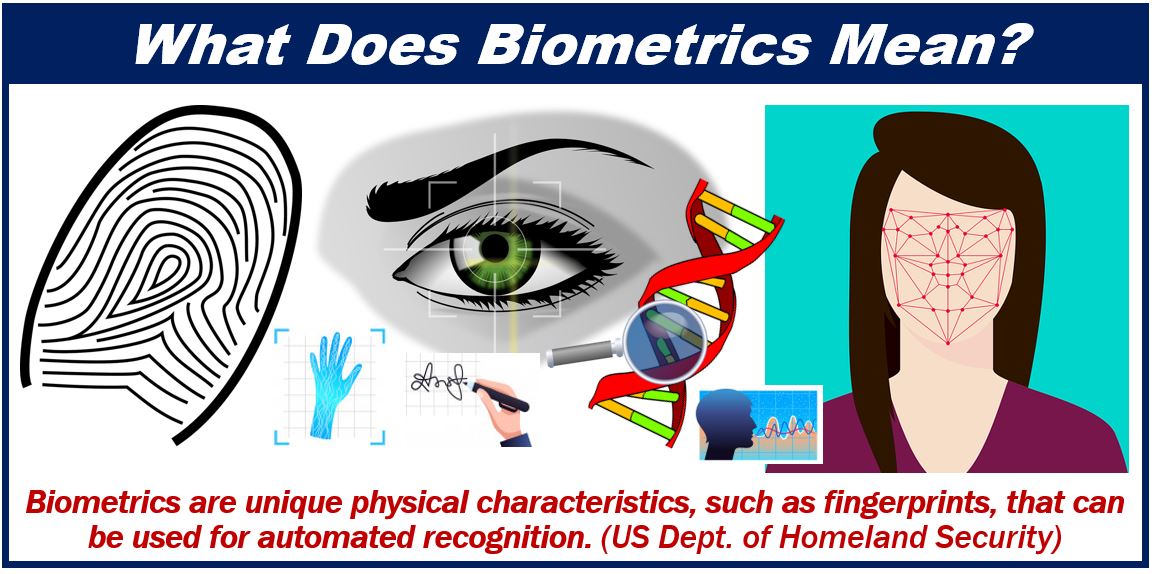In today’s fast-paced world, biometrics are more important than ever. Governments and private corporations are understanding the need for secure identification of subjects and linking these biometric identifiers to one unique individual.
There are several different methods of collecting and using biometric identification. One of the most popular in today’s market is fingerprint identification. Other popular methods of identifying an individual include face recognition and retina scanning.

The future of biometrics is exciting, with new methods like behavioral measurements and vein patterns. Biometrics can also be highly valuable in contact tracing, such as that used in combating the coronavirus pandemic.
Jonathan Ramaci explores some of the ways in which biometric technology is used today as well as the upcoming advancements in the field.
How Biometric Measurements Work
Before biometrics can be used to positively identify a person, the data in question must first be gathered and associated only with the specific individual. The data must be stored in an accessible format.
The goal of taking a biometric measurement is capturing the information needed to compare with others. This can involve taking a photo, making a voice record, or taking a fingerprint.
How We Currently Use Biometrics
Biometrics for Government
Biometrics replace the need for physical IDs and provide undeniable proof of a citizen’s identity. Fingerprint-based identity documents also help governments create safe environments while ensuring proper access to welfare programs and citizen services.
United States Homeland Security uses biometrics to prevent illegal entry into the country. It helps to administer the benefits of immigration, give credentials to immigrants, and facilitate legitimate trade and travel. The Office of Biometric Identity Management provides a system called IDENT which is shared with the Department of Justice and Department of Defense.
Biometrics in Banking
Banking is a field where biometrics is just beginning to take off. Biometrics could eventually replace PIN numbers at banking machines and point-of-sale terminals. Today, fingerprint identification is being used for preventing unauthorized access to accounts and computers. Biometrics have the potential to save millions of dollars which are lost each year to financial fraud.
Biometrics in the Workforce
Biometrics are used in the workplace to help eliminate inaccurate timecards and employee time theft. This can help to keep payroll numbers accurate. Employees need to be present at work for this system to operate, which means that dishonest employees are not able to clock in for one another.
Businesses are able to spend less money on physical ID cards and less time on resetting passwords. This may seem like a small expense of time and money, but in an operation of any size, every penny counts toward profits.
Biometric Applications in Consumer Products
Apple has been a leader in introducing biometrics to everyday use. The previous generation of iOS devices used fingerprint scanning to unlock phones and tablets. Today, these devices use facial recognition.
Newer Applications of Biometrics
Biometric technology is beginning to move past voice recognition, fingerprint scanning, and retina scanning. One of the newest ways that biometrics are being used is gait recognition. This system uses how a person walks to positively identify them. Each person has a unique stride, and this is an easy way to identify people in a non-invasive manner.
Vein recognition is another new technology that is beginning to take its place among the best biometric methods. Vein recognition is more accurate than retina or iris scanning and is a cutting-edge technique.
Tightening Regulations
As biometric technology develops, federal, state, and local governments are developing privacy regulations. In Illinois, the Supreme Court ruled that private companies could not collect biometric data without their consent. Other states and countries are adopting measures that could affect the biometrics industry.
The Use of Biometrics in Contact Tracing
During today’s COVID-19 pandemic, biometric tracing has become more important than ever. Governments are being given permission to use biometric and geolocation data in order to trace contacts. Biometric data could also be taken when a person receives the coronavirus vaccine, making it easier to verify.
Potential Issues
One of the emerging problems with biometrics is that it is not possible to “reset” the information if it is ever lost or stolen. When the information is breached, it is breached forever. It may be difficult to put into play, but companies are striving to correct this problem so that biometrics can be used far into the future.
Privacy is another major issue that affects biometric technology. People could be traced using facial and gait recognition without the subject’s knowledge. This could help governments track people’s movements, potentially invading their privacy. Courts and governments will have to pass laws like Illinois’ law protecting people’s privacy.
Using Cutting-Edge Technology
Jonathan Ramaci believes that biometric identification will continue to grow as a field. As regulations in the government and in banking fields grow, people will need to positively identify themselves to access services. Biometrics are also useful for contact tracing, as with today’s pandemic.
The technology of biometric identification continues to grow, and there may be exciting advancements coming. Jonathan Ramaci encourages business and government leaders to stay abreast of this technology and discover ways that it can help with their mission.
Interesting related article: “What is Cybersecurity?“

